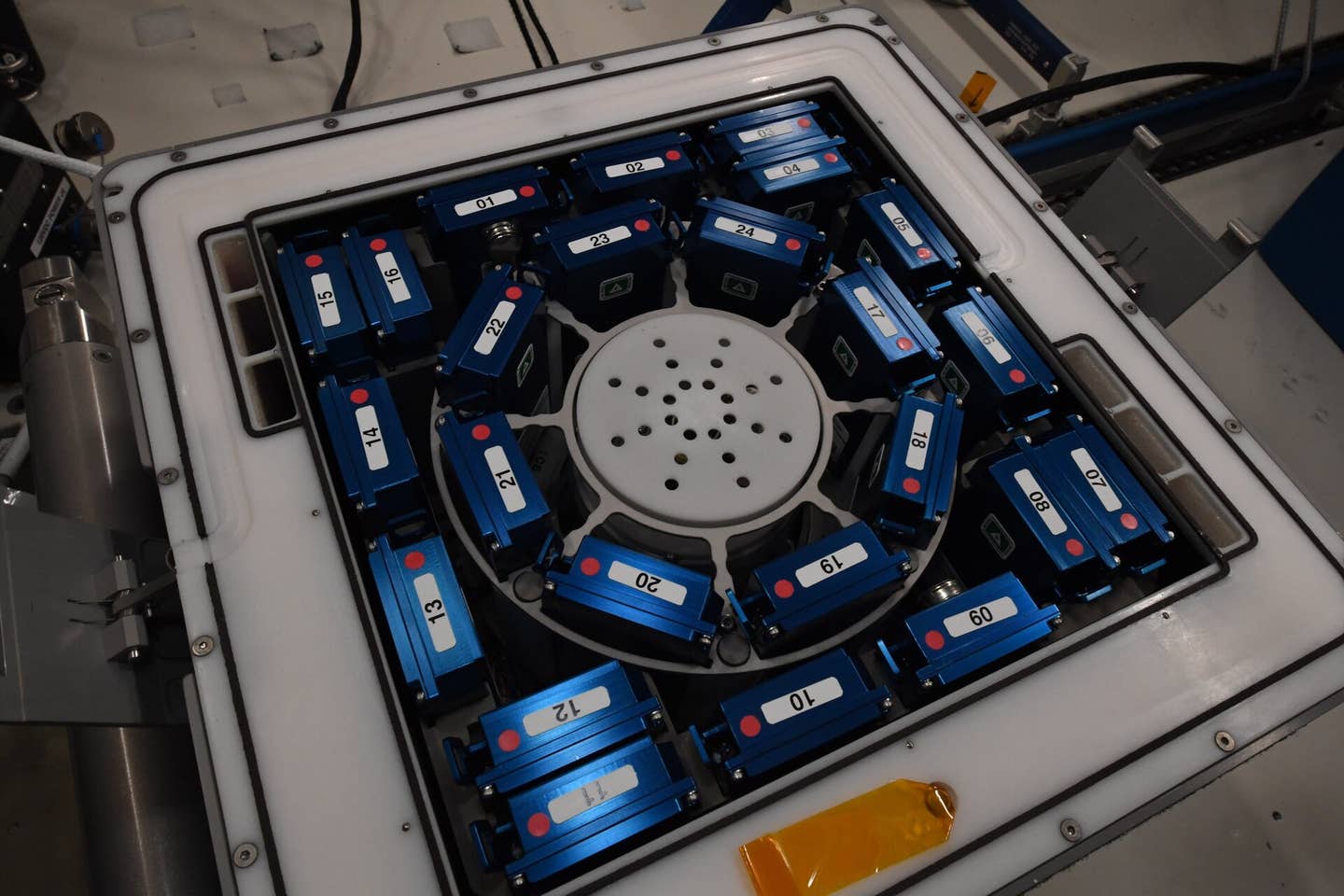Worm experiments expose hidden health risks of deep space travel
New roundworm worm experiments in orbit reveal how microgravity weakens muscle and may improve health on Earth.

 Edited By: Joseph Shavit
Edited By: Joseph Shavit

The second Molecular Muscle Experiment, MME-2, was launched to space from Cape Canaveral, USA, on 3 June 2021 with thousands of tiny C. elegans worms to live on board the International Space Station. (CREDIT: ESA/NASA–T. Pesquet)
When scientists first sent microscopic worms into orbit in 2018, they hoped to answer a question that has shaped every discussion about long missions. What really happens to your body when gravity no longer pulls at your muscles and bones?
You often hear about changes in eyesight and bone thinning, but the fastest and most unsettling shifts happen in your muscles. During six months on the International Space Station, an astronaut can lose almost forty percent of their strength, a decline similar to what you might see across several decades of aging. That drop weakens performance and raises the risk of injury, and it forces researchers to confront the moral and practical challenges of trips to Mars.
To understand the biology behind that decline, researchers chose a tiny partner. Caenorhabditis elegans, a roundworm no longer than a grain of sand, might seem like an unlikely stand-in for human muscle, yet its cells work in surprisingly similar ways. These worms use and store energy like we do and show muscle changes in space that mirror those seen in astronauts. Their small size and quick life cycle make them ideal travelers when space is tight and experiments must unfold fast.
What the First Worm Mission Revealed
The 2018 Molecular Muscle Experiment, a United Kingdom project, sent thousands of these worms to orbit. Once the samples returned to Earth, scientists found that the animals showed clear signs of muscle decline. Genes that normally support movement and keep the internal structure of muscle cells stable switched off in microgravity. Other genes tied to energy production, especially those involved in the mitochondria, also quieted, pointing to sluggish metabolism.
The changes were more than genetic. When the worms’ descendants grew in microgravity, they pushed with less force as they moved. This measurable drop in strength confirmed the early molecular findings. Still, the creatures grew and reproduced normally on the station, giving scientists several generations to observe and proving the hardware worked well in orbit.
Because many of the affected pathways match those in human muscle, the results helped researchers understand why astronauts lose strength so quickly. The work also guided new approaches to protect crews who will one day travel farther from Earth.
A New Tool for a New Mission
Now a fresh project aims to build on that progress. Teams from University of Exeter and University of Leicester are preparing a new space mission featuring the Fluorescent Deep Space Petri Pod, a compact laboratory about the size of a loaf of bread. Engineered at Space Park Leicester, this three kilogram device holds twelve small pods, each equipped with food, air and temperature control. Four of the pods can be imaged in real time, letting researchers watch living organisms respond to harsh space conditions.
The device allows scientists to study how living things react to vacuum, radiation and weightlessness. Professor Mark Sims of Leicester, who helped guide the engineering efforts, said the device reflects decades of experience with orbital experiments. He believes it positions the United Kingdom as a leader in life sciences research for upcoming missions near Earth and in deep space.
The first flight-ready units have cleared tests in the United States. After launch in April 2026, the pods will first operate inside the International Space Station, then move outside to face open space. The worms, whose heads naturally emit a faint glow, will be monitored with miniature cameras. Images and sensor readings will be saved inside the device and sent back through the station’s communication network. Eight pods will carry additional microbes or test materials to compare how different samples respond.
Professor Tim Etheridge of the University of Exeter, who leads the scientific side of the mission, said the new device solves many practical challenges of space biology. “Performing biology research in space comes with many challenges but is vital to humans safely living in space,” he said. He added that the system opens new paths for experiments on many types of launch vehicles instead of relying only on large missions.
What Researchers Hope to Discover
Exploring why muscles weaken in orbit may change how you think about aging, athletic training and disease on Earth. Although worms hardly seem similar to humans, their muscle cells work in much the same way at the molecular level. Because they grow so quickly, scientists can observe many generations in a short span, making them a powerful tool for studying muscle decline.
Dr. Amanda Collis of the Biotechnology and Biological Sciences Research Council described the work as a strong example of international teamwork. She said it could support new treatments for muscular dystrophy and lead to better care for conditions like diabetes that affect metabolism and muscle health. These findings also matter for the astronauts of the future, who may spend months or years far from home. Without strong ways to protect muscle strength, simple tasks could suddenly become dangerous.
For Gaffney, who grew up captivated by space science, watching the United Kingdom’s first large muscle research mission reach the International Space Station marked a personal milestone. He believes each study adds another piece to a much wider picture of how the human body adapts to life away from Earth.
Practical Implications of the Research
Muscle decline in space reflects a deeper story about how the human body depends on gravity. When that force disappears, your cells work differently and your tissues respond in ways that scientists are still trying to understand. The worms in these experiments help reveal the earliest signs of those changes. These small creatures move the field closer to answers that could protect crews on long missions and help people on Earth who face muscle loss from aging or disease.
The findings from these worm studies may lead to better ways to protect muscle strength during long space missions, which will shape the safety of future flights to the Moon and Mars.
The research may also help create new therapies for muscle wasting caused by aging, metabolic illness and diseases such as muscular dystrophy.
By clarifying how muscle cells react to stress and reduced gravity, scientists gain insight that could improve treatment, rehabilitation and health outcomes for people on Earth.
Related Stories
- 'Light propulsion' - scientists plan to launch tiny lifeforms into interstellar space
- Flatworms defy stem cell rules, offering a blueprint for human regeneration
- Scientists discover giant predatory worms dating back 518 million years
Like these kind of feel good stories? Get The Brighter Side of News' newsletter.
Joshua Shavit
Science & Technology Writer and Editor
Joshua Shavit is a Los Angeles-based science and technology writer with a passion for exploring the breakthroughs shaping the future. As a co-founder of The Brighter Side of News, he focuses on positive and transformative advancements in AI, technology, physics, engineering, robotics and space science. Joshua is currently working towards a Bachelor of Science in Business and Industrial Engineering at the University of California, Berkeley. He combines his academic background with a talent for storytelling, making complex scientific discoveries engaging and accessible. His work highlights the innovators behind the ideas, bringing readers closer to the people driving progress.



